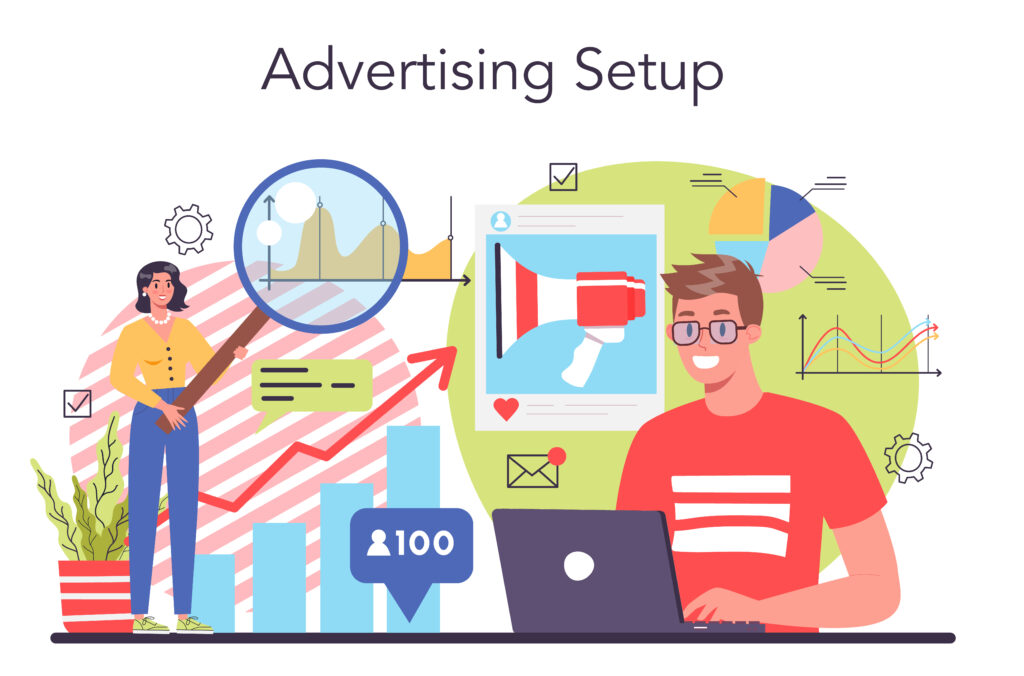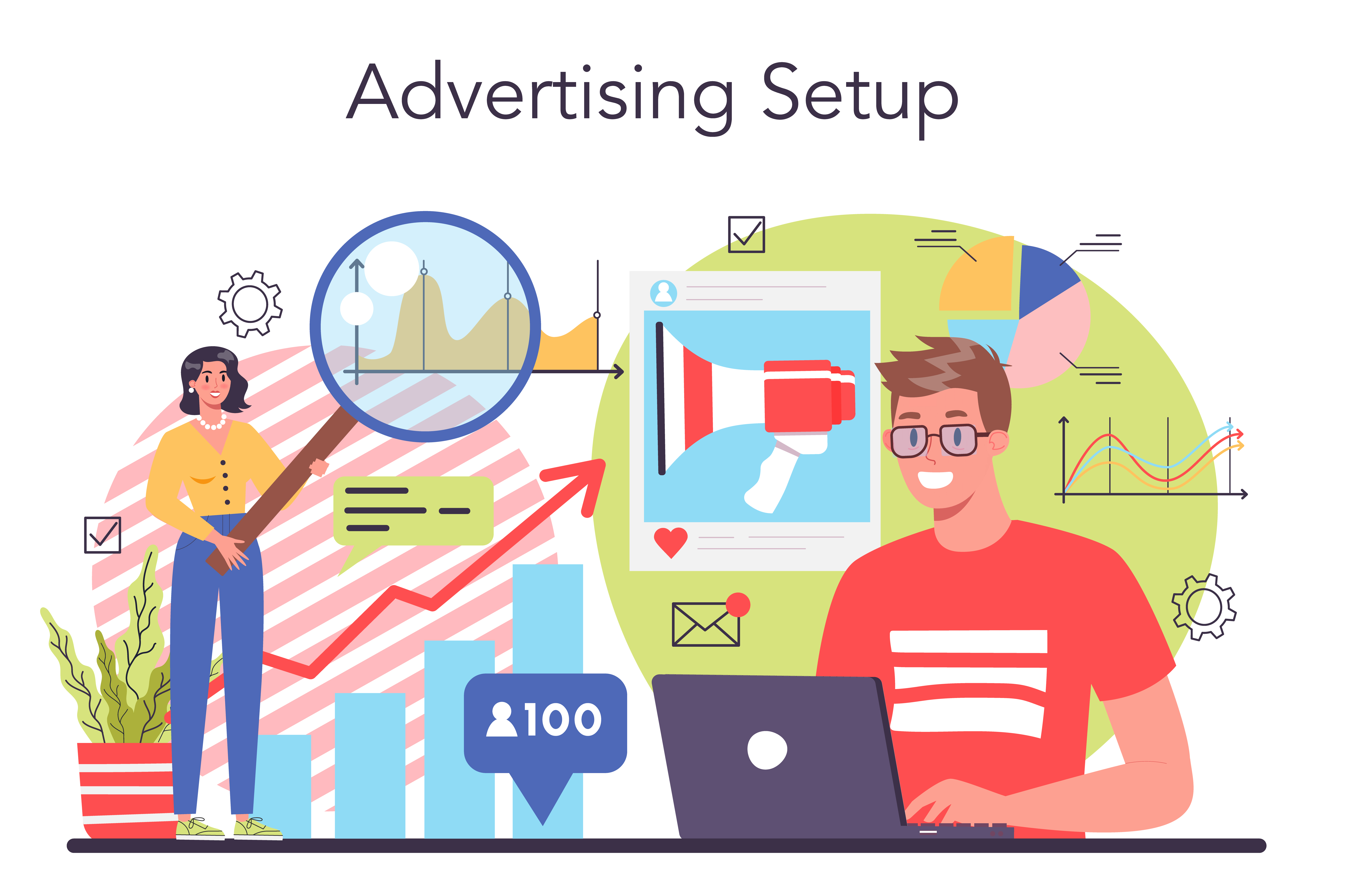In today’s digital age, where the virtual landscape is crowded with information and advertisements, businesses strive to decipher the true impact of online ads. The digital realm offers unparalleled opportunities for marketing, enabling businesses to connect with their target audience on a global scale. However, with this vast reach comes the challenge of accurately measuring the effectiveness of online advertising campaigns.

The Evolution of Advertising: From Traditional to Online
Traditionally, advertising success was measured by metrics such as the number of impressions, reach, and frequency of an ad. However, the shift from traditional to online advertising has brought about a paradigm shift in the way we evaluate success. Online ads offer a plethora of data points and analytics tools, allowing marketers to delve deeper into consumer behavior and campaign performance.
The Multi-Dimensional Impact of Online Ads
The impact of online ads extends beyond just the surface level metrics. While impressions and click-through rates (CTRs) provide a snapshot of engagement, understanding the true impact requires a more comprehensive approach. Let’s explore the key dimensions that contribute to the overall effectiveness of online advertising.
1. Brand Awareness and Recall:
One of the primary objectives of online advertising is to enhance brand visibility. Metrics like impressions and reach play a crucial role in measuring how many users have been exposed to a brand. However, to gauge the true impact, marketers should delve into metrics that indicate brand recall and recognition. Surveys and studies assessing brand recall among users who have been exposed to online ads over time provide valuable insights into the effectiveness of a campaign.
2. Engagement Metrics:
Beyond the initial click, measuring user engagement is essential. Metrics like time spent on a website, interaction with content, and social media shares provide a more nuanced understanding of how users are interacting with the brand after encountering an online ad. High engagement rates signify not only interest but also the potential for conversions down the line.
3. Conversion Rates and ROI:
The ultimate goal of any advertising campaign is to drive conversions and achieve a positive return on investment (ROI). Tracking conversion rates and attributing them to specific online ads is crucial for assessing the direct impact on the bottom line. Advanced analytics tools enable marketers to trace the customer journey from the initial ad exposure to the final conversion, providing a comprehensive view of the conversion funnel.
4. Audience Segmentation and Targeting:
Online ads allow for precise audience targeting based on demographics, interests, and behaviors. Evaluating the impact of online ads involves analyzing how well the campaign resonates with the intended audience. Metrics related to audience segmentation, such as the performance of ads among different age groups or geographical locations, help refine targeting strategies for future campaigns.
5. Ad Creative and Messaging:
The creative elements of an online ad, including visuals and messaging, significantly influence its impact. A/B testing different ad creatives and analyzing user responses can reveal which elements resonate most with the audience. Metrics such as conversion rates and engagement specific to different ad variations provide insights into the effectiveness of creative choices.
Advanced Tools for Measuring Impact
As the digital marketing landscape continues to evolve, so do the tools available for measuring the impact of online ads. Leveraging advanced analytics platforms and technologies is essential for gaining a holistic understanding of campaign performance.
1. Google Analytics:
Google Analytics remains a cornerstone for analyzing website traffic and user behavior. Marketers can utilize features like conversion tracking, goal setting, and e-commerce tracking to measure the impact of online ads on website interactions and conversions.
2. Attribution Models:
Attribution modeling is crucial for assigning value to different touchpoints in the customer journey. Various models, such as first-click, last-click, and multi-touch attribution, offer insights into how online ads contribute to the overall conversion process.
3. Social Media Analytics:
For ads distributed on social media platforms, utilizing the built-in analytics tools provides valuable data on reach, engagement, and conversions. Platforms like Facebook, Instagram, and Twitter offer detailed insights into ad performance.
4. Heatmaps and User Session Recordings:
Understanding user behavior on a website is vital for assessing the impact of online ads. Heatmaps and user session recordings provide visual representations of how users interact with a website, helping identify areas for improvement in the user experience.
5. Customer Surveys and Feedback:
Direct feedback from customers through surveys and reviews offers qualitative insights into the impact of online ads on brand perception and customer satisfaction. Combining quantitative data with qualitative feedback paints a more comprehensive picture of overall success.
Challenges in Measuring True Impact
While advanced analytics tools offer a wealth of data, challenges still exist in accurately measuring the true impact of online ads.
1. Cross-Device Tracking:
With users seamlessly transitioning between devices, tracking their journey across platforms poses a challenge. Marketers need to implement strategies for cross-device tracking to ensure a complete view of user interactions with online ads.
2. Ad Blocking:
The rise of ad-blocking technology has led to a decrease in the visibility of online ads. Marketers must adapt by creating non-intrusive, engaging ads that users are less likely to block.
3. Data Privacy Regulations:
Increasing concerns about data privacy have led to the implementation of stringent regulations. Marketers must navigate these regulations while still collecting the necessary data to measure the impact of online ads effectively.
4. Attribution Complexity:
Determining the exact contribution of each touchpoint in the customer journey can be complex. Attribution models aim to address this challenge, but a one-size-fits-all approach may not capture the intricacies of every user’s path to conversion.
The Future of Measuring Online Ad Impact
As technology continues to advance, the future of measuring the impact of online ads holds exciting possibilities. Artificial intelligence (AI) and machine learning (ML) are increasingly being integrated into analytics platforms, enabling more accurate predictions and insights.
1. Predictive Analytics:
AI-powered predictive analytics can anticipate future trends and user behavior based on historical data. This allows marketers to proactively optimize campaigns for maximum impact.
2. Personalization and Dynamic Content:
The era of personalized advertising is upon us. Dynamic content and personalized experiences tailored to individual users enhance engagement and, consequently, the impact of online ads.
3. Blockchain Technology:
Blockchain technology holds the promise of transparent and secure data tracking. Implementing blockchain in advertising can address concerns related to data privacy and trust, ultimately contributing to more accurate measurement of online ad impact.
4. Augmented Reality (AR) and Virtual Reality (VR):
The integration of AR and VR in online advertising provides immersive experiences that go beyond traditional metrics. Measuring the impact of these experiences may involve novel metrics, such as user interaction within virtual environments.
Conclusion
In the ever-evolving landscape of online advertising, accurately measuring the true impact is both a challenge and a necessity. Beyond the conventional metrics of impressions and click-through rates, marketers must embrace a multi-dimensional approach that considers brand awareness, engagement, conversions, and audience targeting.
Advanced analytics tools and emerging technologies offer unprecedented opportunities to gain insights into user behavior and campaign performance. As we navigate the complexities of cross-device tracking, ad blocking, and data privacy regulations, the future of measuring online ad impact holds promises of more accurate predictions, personalized experiences, and transparent data tracking.
By staying abreast of technological advancements and embracing a holistic measurement approach, businesses can decode the success of their online advertising efforts and optimize campaigns for maximum impact in the digital realm. As we venture into this exciting future, one thing remains clear – understanding and measuring the true impact of online ads is not just a goal but a continuous journey of refinement and adaptation.
Related Articles:
1. Impact of Online Advertisement on Customer Satisfaction
2. 3 ways ad measurement is evolving to gauge true ad impact
3. measuring short-term impact of online ad exposure




